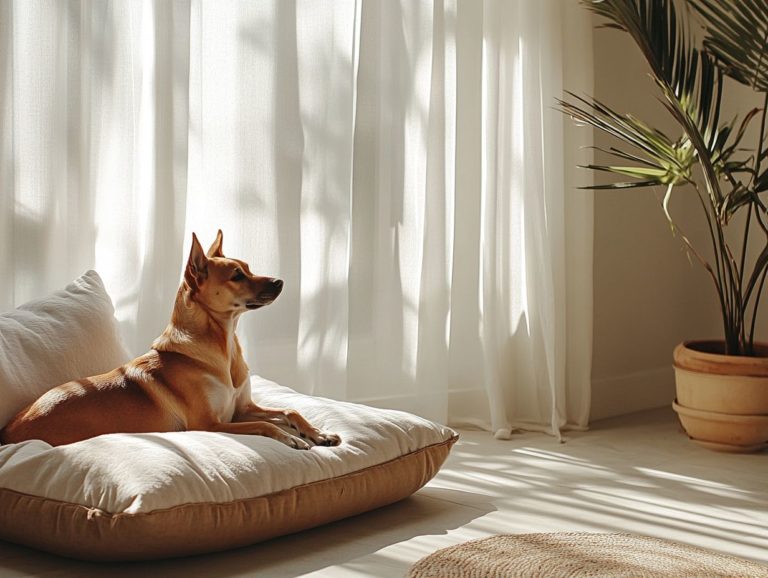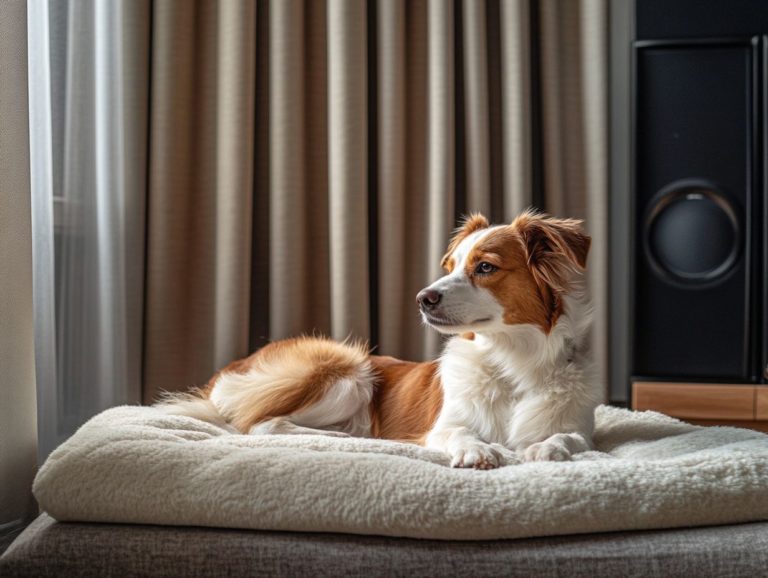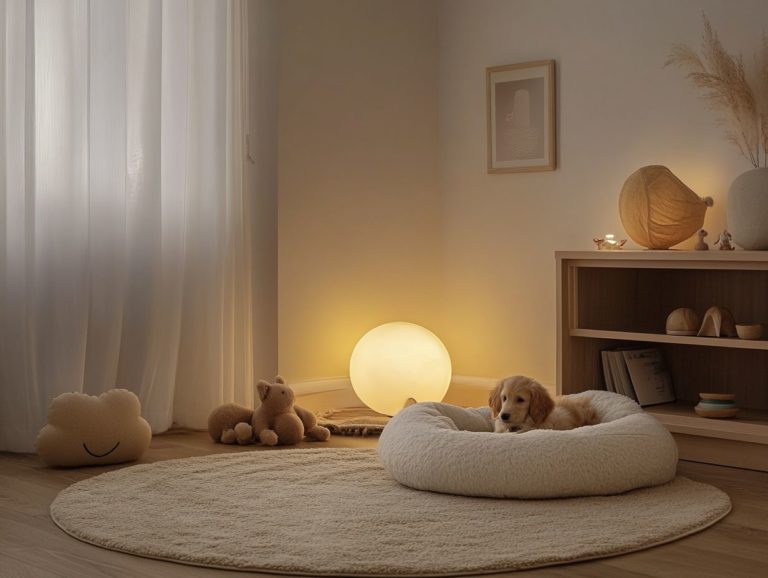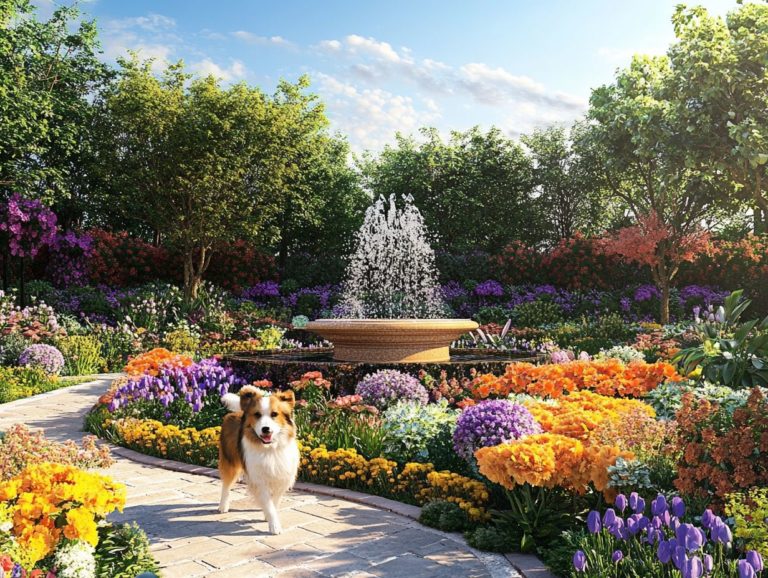Creating a Harmonious Home for Anxious Pets
An anxious home can significantly impact your furry companions, shaping their behavior and overall well-being.
Understanding the connection between your environment and your pets mental health is essential for cultivating a harmonious living space.
This article delves into the signs of anxiety in pets, highlighting everything from physical cues to behavioral changes.
It also offers practical strategies for creating a calming environment, establishing a consistent routine, and recognizing when it s time to seek professional help.
Your pets deserve a peaceful life! Let s dive into how we can make that happen!
Contents
- Key Takeaways:
- The Impact of an Anxious Home on Pets
- Signs of Anxiety in Pets
- Creating a Calm Environment
- Establishing a Routine for Pets
- Seeking Professional Help
- Frequently Asked Questions
- What are some ways to create a harmonious home for anxious pets?
- How can I make my home safe for my anxious pet?
- Why is routine important for anxious pets?
- Are there any natural remedies that can help calm anxious pets?
- What should I do if my pet’s anxiety is severe?
- How can I help my anxious pet adjust to a new home?
Key Takeaways:
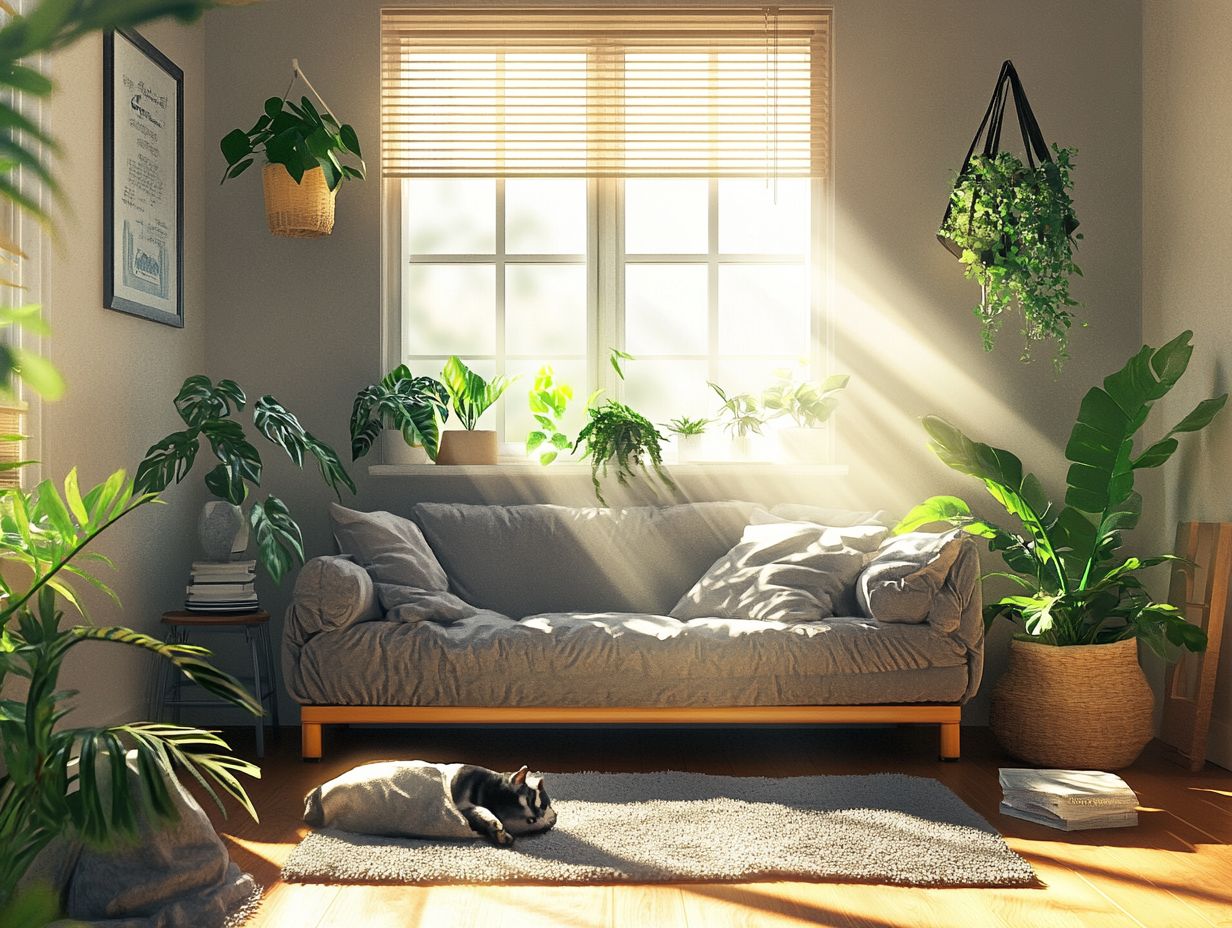
- Understand how your home environment can impact your pet’s anxiety levels and overall well-being.
- Recognize the signs of anxiety in your pet, both behavioral and physical, and address them promptly.
- Create a calm and stress-free environment for your pet by minimizing triggers and utilizing natural remedies.
The Impact of an Anxious Home on Pets
The home environment is pivotal in shaping the emotional well-being of your pets. Dogs and cats are particularly sensitive to factors like noise, chaos, and separation anxiety, so knowing how to set up a calm space for my anxious pet can make a significant difference.
An anxious atmosphere can give rise to behavioral issues. These issues not only disrupt your pets’ comfort but also compromise the overall harmony of a multi-pet household. Learning how to help your anxious pet feel safe can greatly improve the situation.
To cultivate a nurturing space, it s vital to prioritize fun activities that encourage relaxation and diminish stress signals. Gradual interactions among your pets will further enhance their sense of security and foster a peaceful home.
Understanding How Environment Affects Pets
The environment in which your pets live plays a crucial role in their overall comfort and emotional well-being. It shapes their behavior and interactions with your family.
A chaotic space can heighten anxiety, making it challenging for your pets to unwind. Conversely, a thoughtfully organized environment filled with calming elements fosters a sense of security, and learning how to create a calm environment for anxious pets can greatly enhance their comfort.
This security paves the way for healthier relationships between you and your furry companions. Implementing strategies such as creating designated areas for play, rest, and exploration, along with offering opportunities for foraging where pets can search for hidden treats boosts their mental stimulation.
By incorporating positive reinforcement techniques, like rewarding your pets when they engage with their environment, you encourage desirable behaviors and strengthen the bond you share. This ultimately contributes to a more harmonious home.
Signs of Anxiety in Pets
Recognizing the signs of anxiety in your pets is essential for fostering their mental well-being. Ensuring they feel secure and comfortable in their surroundings is key.
Symptoms of separation anxiety can present themselves in various forms. Look out for stress signals like excessive barking, destructive behavior, or shifts in eating habits in both dogs and cats.
Act quickly to help your pets feel safe! Paying close attention to their body language is crucial for identifying these stressors and addressing them promptly. This ultimately enhances your pets’ quality of life.
Behavioral and Physical Indicators
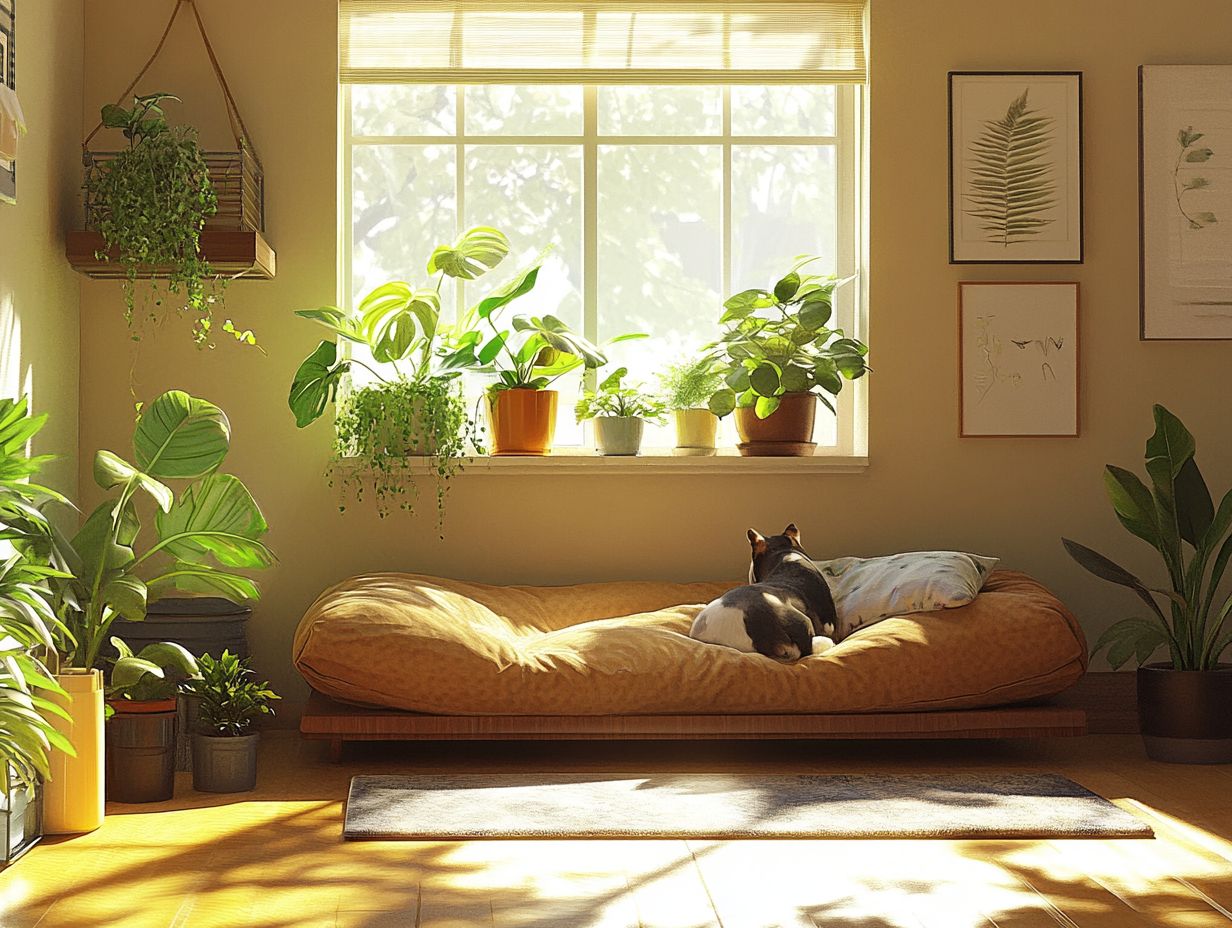
Behavioral and physical indicators play a vital role in recognizing anxiety in your pets. Both dogs and cats display a range of signs that reflect their emotional well-being.
For instance, you may observe a once-sociable dog beginning to withdraw from interactions, opting instead to seek refuge in corners or under furniture. Similarly, cats might retreat to high perches or secluded spots, preferring solitude over company.
Excessive grooming can also emerge as a concerning behavior, potentially leading to bald patches or skin irritations. In more severe cases, you might witness signs of aggression, with your pet barking or hissing more frequently than usual.
It’s essential to pay close attention to their body language. Signs like trembling or a tucked tail can indicate distress, while a relaxed posture may suggest contentment. Recognizing these subtle cues can significantly aid in addressing their needs effectively.
Creating a Calm Environment
Creating a calm environment is essential for alleviating pet anxiety and promoting emotional stability, particularly in multi-pet households where dynamics may fluctuate. For more tips on this, consider creating a home environment for anxious pets.
By thoughtfully designing spaces to minimize things that make your pets anxious and incorporating relaxation stations, you can significantly enhance your furry companions’ comfort. For more tips, check out how to create a safe space for anxious pets.
Embracing natural remedies, alongside a range of enrichment activities, can further cultivate a peaceful atmosphere. This ensures your pets feel secure and supported.
Minimizing Stress Triggers
Minimizing stress triggers is essential for creating a calming environment for your pets, especially in a multi-pet household. For guidance on this, consider how to build an anxiety-free pet environment, where careful adjustments can help reduce heightened anxiety during interactions.
Common stressors in your home might include loud noises from appliances like vacuum cleaners or dishwashers. The busy activity of children playing or multiple pets vying for your attention can also be a concern.
Establishing a structured environment is key. Consider setting aside specific areas for quiet play and rest, free from disruptions.
Incorporate soundproofing measures like carpets and curtains to absorb noise and create a soothing atmosphere. Additionally, understanding the impact of home décor on pet anxiety can help you establish a routine that includes calm periods, allowing your pets to unwind without interference.
By fostering a sense of stability and predictability, you can significantly enhance the comfort and well-being of your cherished furry companions.
Using Natural Remedies
Using natural remedies can significantly enhance your pet’s comfort and promote relaxation, offering holistic support for anxiety in both dogs and cats.
By incorporating essential oils (natural oils extracted from plants) like lavender and chamomile into their environment, you can create a soothing atmosphere that encourages calmness.
Calming collars infused with these delightful scents also provide continuous relief, while herbal supplements like valerian root or passionflower can further bolster their emotional well-being.
Integrating these remedies into your pet’s daily routine not only fosters relaxation but also opens the door for enrichment activities, such as interactive play and engaging puzzle toys.
Creating designated relaxation stations filled with cozy blankets and toys offers your pet a much-needed retreat, ensuring they feel secure and content in their surroundings.
Establishing a Routine for Pets
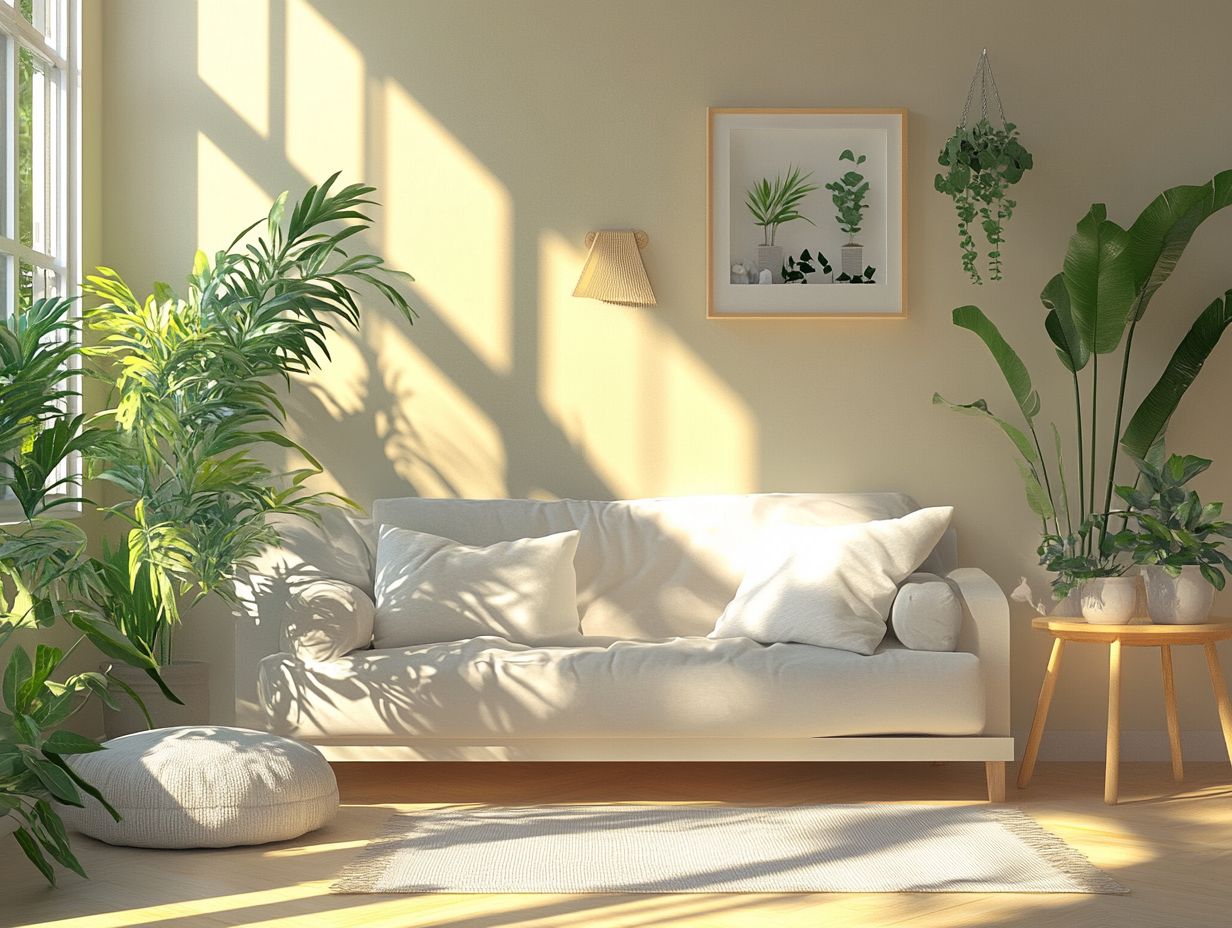
Establishing a routine for your pets is essential in nurturing a sense of security and predictability. This significantly alleviates anxiety in both dogs and cats.
A structured and consistent schedule helps your pets grasp what to expect throughout the day, enhancing their emotional well-being and comfort within your home.
By providing individual attention and facilitating gradual interactions with other pets, you can further ease anxiety and create calm spaces for anxious pets, cultivating a harmonious living environment.
The Importance of Structure and Consistency
Structure and consistency in your pet s daily routine are essential for their emotional well-being. They provide the stability needed to alleviate anxiety.
When your pets become accustomed to a predictable schedule, they develop a greater sense of safety and security.
For example, consistent feeding times reassure dogs and cats that their needs are being met. Regular exercise allows them to burn off excess energy and stress.
Incorporating bonding activities like playtime or training sessions at specific times not only fosters a deeper connection between you and your pets but also enhances the joy of shared experiences.
This structured approach promotes physical health and significantly improves overall comfort. It leads to fewer anxiety-related behaviors, such as excessive barking, destructive scratching, or hiding.
Ultimately, your pets thrive in environments where routine reigns, creating a calmer, more harmonious life for both your furry companions and your family.
Seeking Professional Help
When home strategies fall short in alleviating your pets’ anxiety, it’s vital to seek professional help to tackle underlying issues like separation anxiety and behavioral challenges.
Consulting a veterinarian or a certified behaviorist can offer tailored guidance on effective training techniques. This support ensures your pets receive the help they need for their mental well-being.
Their expert advice can truly transform the atmosphere in your home, helping to restore comfort and harmony for both you and your beloved companions.
When to Consult a Veterinarian or Behaviorist
Knowing when to consult a veterinarian or behaviorist is crucial for effectively managing anxiety in your pets, especially when signs of anxiety persist or escalate.
Remain vigilant for indicators such as excessive barking, trembling, hiding, or destructive behavior. These symptoms often point to underlying distress. If these behaviors significantly disrupt your pet’s quality of life or routine, seeking professional intervention is essential.
Expert-led behavioral training includes techniques like helping pets gradually get used to things that scare them and teaching them to associate something pleasant with a scary situation. These strategies promote improved emotional well-being for your pets, strengthen the bond between you, and enhance overall behavior, culminating in a more harmonious home environment.
Frequently Asked Questions
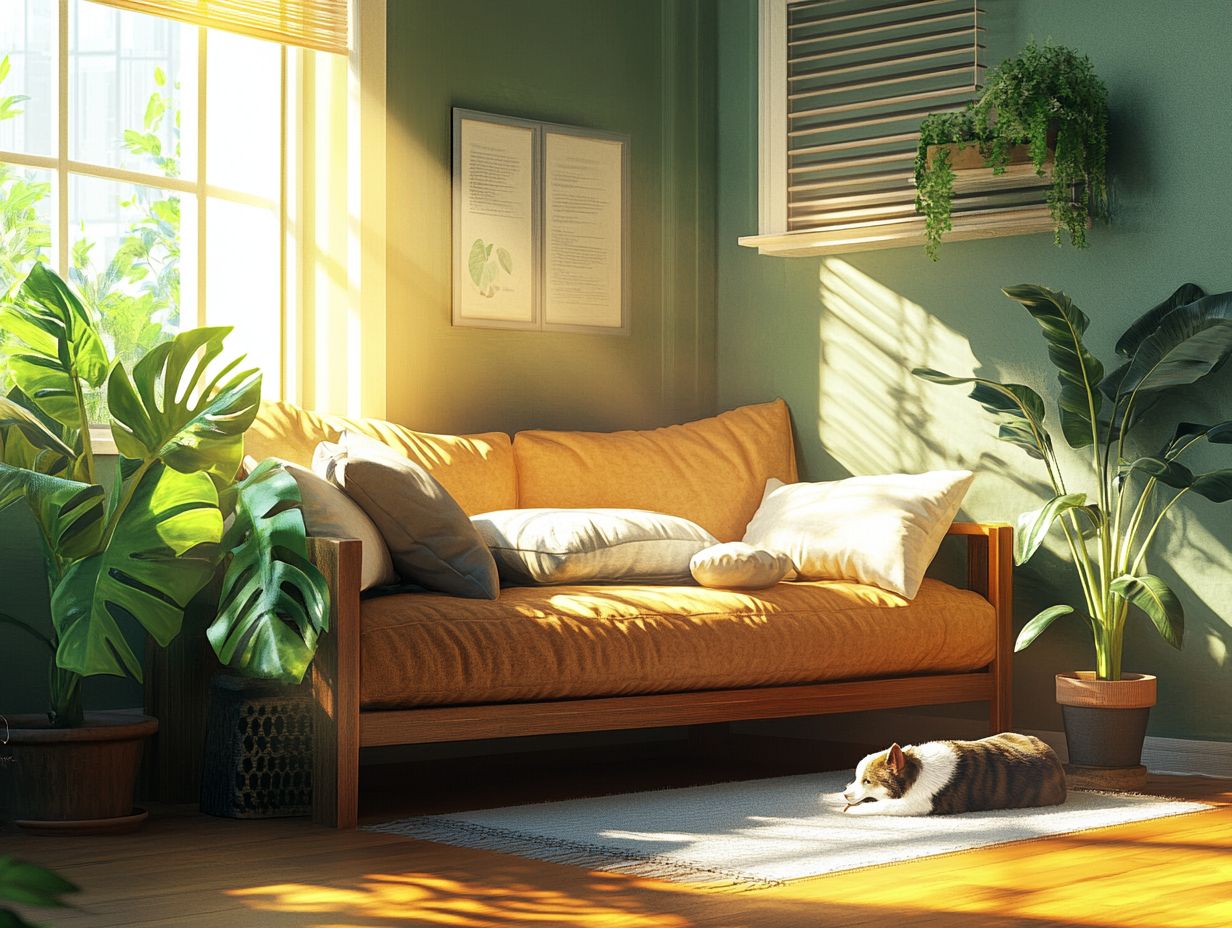
What are some ways to create a harmonious home for anxious pets?
Create a harmonious home by providing a safe space, establishing a routine, and using calming techniques like music.
How can I make my home safe for my anxious pet?
To make your home safe for your anxious pet, remove or secure all potential hazards, provide a designated safe space, and consider creating a zen corner for your anxious pet to help them feel more secure. Avoid sudden loud noises or changes in the environment as well.
Why is routine important for anxious pets?
Routine helps reduce anxiety in pets by giving them a sense of predictability and stability, allowing them to feel more in control of their environment.
Are there any natural remedies that can help calm anxious pets?
Yes, natural remedies like CBD oil, herbal supplements, and pheromone sprays can help calm anxious pets. Always consult with a veterinarian before trying any new remedies.
What should I do if my pet’s anxiety is severe?
If your pet’s anxiety is severe, consult with a veterinarian to rule out any underlying medical conditions. They may recommend behavior modification techniques or medication to help manage your pet’s anxiety.
How can I help my anxious pet adjust to a new home?
To help your anxious pet adjust to a new home, make the transition gradual, provide familiar items like their bed or toys, and give them plenty of love and reassurance. Consulting with a professional trainer or behaviorist for additional support can also be helpful.
Take action today to help your pet feel secure!

